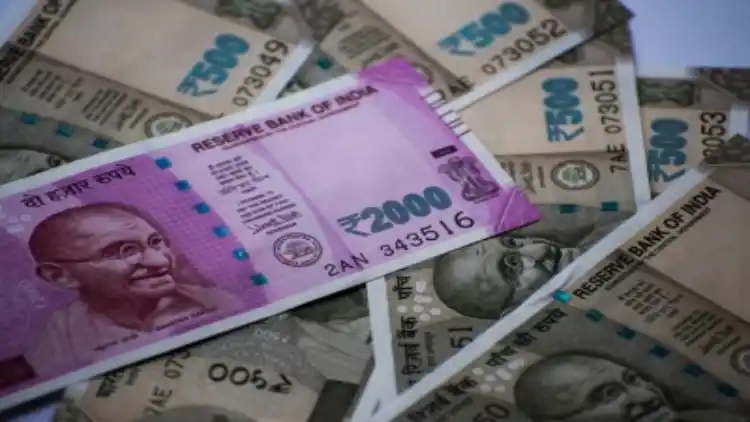
 Sushma Ramachandran
Sushma Ramachandran
India’s economic recovery in 2021-22 seems to be well on its way. It may not be the sharp V-shaped recovery being talked about by the government’s economic advisors but is certainly better than expected after the disastrous second Covid wave. This had seemed to overwhelm the country and its healthcare infrastructure during April and May this year. Even so, business activity managed to continue in several sectors since movement curbs were confined to regions rather than throughout the country. It is also evidence that the country is learning to live with the pandemic rather than shutting down completely as in the first phase last year.
The GDP growth in the first quarter of the current fiscal (April-June 2021-22) is estimated to have risen by 20.1 per cent. The figure seems high at first glance but has to be seen in the context of the low base - the 24.4 per cent contraction in the first quarter of the last fiscal. Yet it is clearly not as high as it would have been had the growth continued in the normal course in 2020-21. It is possible that the pace of recovery would have been much brisker if the second Covid wave had not gripped the country over this period. In that case, the projections of a clear V-shaped recovery that were being made as early as January by rating agencies may have actually become a reality.
Even now, rating agencies continue to have an upbeat outlook on growth prospects for fiscal 2022. S and P Global Ratings, for instance, expect the economy to grow by 9.5 per cent this year, followed by 7 per cent expansion next year. It maintains its positive outlook for the coming quarters despite concerns over inflation, largely led by food as well as energy prices. Morgan Stanley has also remained optimistic with a projection of 10.5 per cent growth for the year. It expects economic activity to start normalizing from the July-September quarter owing to pent-up demand, ramp up of the vaccination drive and robust global growth along with an expectation of a favourable policy mix. It has, at the same time, pointed to the need to keep a watch over the pace of vaccination and the potential acceleration in Covid cases, which could lead to restrictions on activity.
The Finance Ministry echoes the positive outlook of the agencies in its latest monthly report, indicating there are bright prospects for continued economic recovery based on a broad-based rebound in several leading macroeconomic indicators in July and August. It expects an even quicker pace of revival in the coming quarters despite the threat of the third wave in view of improved pandemic management and higher vaccination coverage.
Clearly whether it is the rating agencies or the Finance Ministry, the biggest worry is over the possibility of a third Covid wave. With experts having repeatedly declared that there is little escape from this eventuality, it is imperative for both central and state governments to ensure that the economy is able to function through various phases of the pandemic. In this regard, the most critical aspect is Covid-appropriate behavior at all times. Fears are now being expressed that with the advent of the festival season, people would be tempted to let their guard down.
Hopefully, lessons would have been learnt from the Kerala experience where allowing celebration of Eid and Onam festivals led to a spurt in cases. Careful monitoring to ensure Covid appropriate behavior is needed especially by state governments.
The second critical aspect is for vaccinations to be carried out at the fastest pace possible, given the availability of vaccines. On this front, both centre and states need to be commended as the target of one crore vaccinations per day is being reached regularly in recent weeks. As a result, the percentage of those covered by at least one dose has risen considerably over the past two months. The target of covering the entire population with at least one dose by December actually looks achievable right now. This is a goal that was considered virtually unattainable just a few months ago when the country was facing serious vaccine shortages.
The need for watchfulness on the Covid front becomes all the more essential as green shoots of economic recovery are visible in many key sectors. The manufacturing purchasing manager’s index, for instance, had contracted to 48.1 in June but expanded to 55.3 in August. The index moves into positive territory when it moves above the 50 mark. Other indicators have also shown an upward trend. These include electricity and petroleum consumption, GST collections, air traffic, railway freight traffic, steel consumption, cement output, along with two wheeler and passenger car sales.
Yet another indicator that has shown surprising growth is exports. Even during the second Covid surge, exports have been rising strongly. Latest data shows these rose by 22 per cent over the period from April to July. A record level of 35.15 billion dollars was registered during the month of July, an increase of 34 per cent over July 2019. One of the reasons behind this steep rise is buoyant demand in major markets of the U.S. and Europe, as restrictions due to Covid have been removed gradually.
The outlook is therefore promising for a sustained recovery in the current fiscal. The problem of unemployment, however, continues to loom large as data from the Centre for Monitoring Indian Economy has been showing high levels of job losses over the past few months. It is here that the government needs to step in and provide succour to service industries such as tourism and hospitality that are large employers. This is a sector that has largely been neglected in all the relief packages announced for the Covid affected industries since last year. Policies need to be formulated to support this segment as it will give a huge boost to job growth in the economy. Otherwise, the country may move on a higher growth path but unemployment will remain a festering problem.
